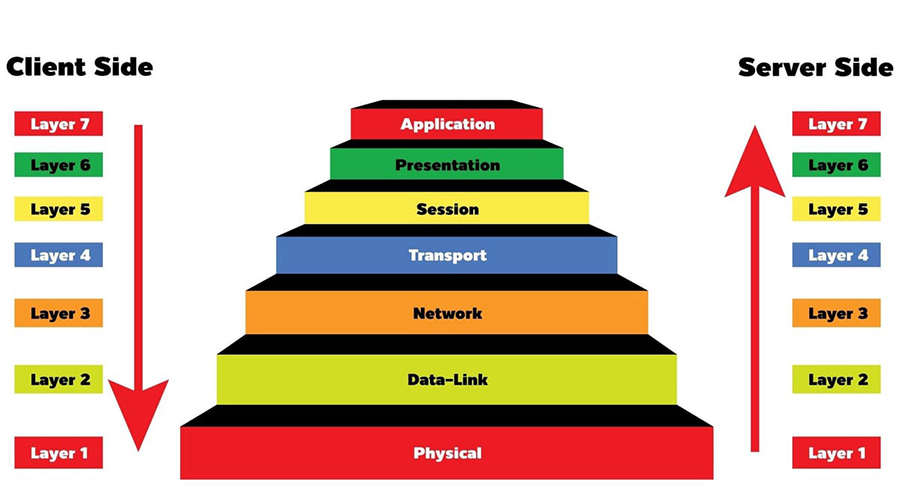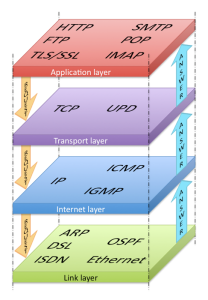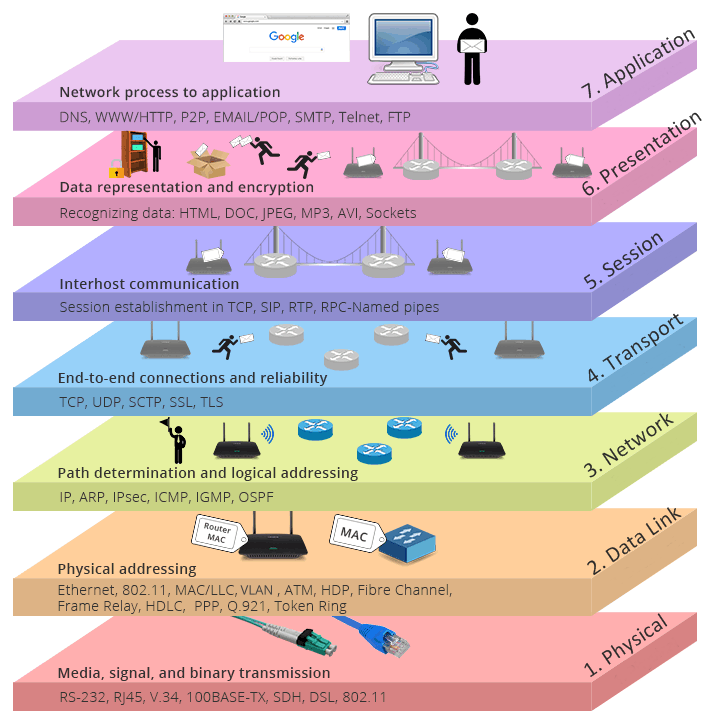With the increasing popularity of the Industrial Internet of Things, network communication has become an indispensable part. The TCP/IP protocol stack, as the core of network communication, plays a crucial role in realizing data transmission and control between devices. This paper briefly describes what osi model and tcp stack are respectively, and the corresponding relationship and difference between osi model and tcp stack. It is convenient for friends in IIoT industry to understand knowledge.
The OSI reference model was published by the International Organization for Standardization ISO in 1984, and it defines a seven-layer framework for network interconnection that aims to provide a common standard for communication in an open system environment. The seven layers are from bottom to top: physical layer, data link layer, network layer, transport layer, session layer, presentation layer and application layer.

The physical layer is the lowest level of the OSI model and is responsible for defining the electrical characteristics, interface connections, and transmission media of a physical device. In the industrial Internet of Things, the physical layer may involve multiple transmission media such as twisted-pair copper wires, coaxial cables, optical fibers and wireless channels such as Wi-Fi, Zigbee, LoRa. The main task of this layer is to provide a reliable physical connection for the data link layer and ensure correct transmission of bit streams.
The data link layer is above the physical layer and is responsible for combining bits into bytes, which are then spliced together to form frames, ensuring correct transmission and reception of data. In the industrial Internet of Things, data link layers often involve protocols such as Ethernet (IEEE 802.3) and wireless local area networks (WLANs) like IEEE 802.11. This layer is also responsible for link access control, error detection and correction, reliable delivery, etc., to ensure the integrity and accuracy of data during transmission.
The network layer is the core layer in the OSI model, responsible for transmitting data from source nodes to destination nodes. At the network layer, Internet Protocol (IP) plays a key role in carrying IP addresses and routing information to enable data transmission between different networks. In the industrial Internet of Things, the network layer may involve complex routing strategies and network topology to ensure efficient transmission and real-time performance of data.
The transport layer is responsible for providing reliable end-to-end communication services and ensuring the integrity and order of data. In the OSI model, the transport layer achieves this function through protocols such as TCP Transmission Control Protocol and UDP User Datagram Protocol. TCP provides reliable, connection-oriented transport services while UDP provides unreliable, connectionless transport services. In the industrial Internet of Things, suitable transport layer protocols can be selected according to different application requirements.
The session layer, presentation layer and application layer together constitute the upper layers of OSI model. They are responsible for communication between applications and data formatting. The session layer is responsible for establishing, managing and terminating sessions; The presentation layer is responsible for data representation and formatting; The application layer provides various network services, such as file transfer and email. In the industrial Internet of Things, these high-level protocols and services are crucial for remote monitoring, data analysis, intelligent control, etc.
The TCP/IP reference model is the most widely used model in the Internet, which divides computer networks into four layers: network interface layer, Internet layer, transport layer, and application layer. Although the TCP/IP model is different from the OSI model in terms of hierarchical division, there are significant similarities between the two models in terms of functionality.

The network interface layer corresponds to the physical and data link layers of the OSI model, responsible for defining the interface connections and data transmission of physical devices. In the TCP/IP model, the network interface layer does not actually define specific protocols. Instead, each participating network uses its own physical and data link layer protocols to connect with the TCP/IP network access layer.
The Internet layer corresponds to the network layer of the OSI model and is responsible for transmitting data from the source node to the destination node. At the Internet layer, the IP protocol is the core protocol, which provides connectionless datagram transmission services and enables data transmission in the network through routing algorithms. In addition, protocols such as ICMPInternet Control Message Protocol and IGMPInternet Group Management Protocol also play an important role in the Internet layer.
The transport layer corresponds to the transport layer of OSI model and is responsible for providing end-to-end communication services. In the TCP/IP model, the transport layer defines two protocols: TCP and UDP. TCP provides reliable, connection-oriented transport services while UDP provides unreliable, connectionless transport services. In the industrial Internet of Things, depending on different application requirements, suitable transport layer protocols can be selected to ensure reliable data transmission.
The application layer corresponds to the high-level session, presentation and application layers of OSI model. It is responsible for providing various network services for users. In the TCP/IP model, the application layer includes multiple protocols such as FTP, Telnet, SMTP, and HTTP, which support various network applications and services. In the industrial Internet of Things, application layer protocols are crucial for implementing remote monitoring, data analysis and intelligent control of devices.
Although there are similarities in the hierarchical structure between OSI and TCP/IP reference models, there still exist some differences in details. Firstly, the OSI model adopts a seven-layer structure, while the TCP/IP model uses a four-layer structure, which is more concise and practical. Secondly, the TCP/IP model is more flexible and open in design. It allows different networks to use their own physical layer and data link layer protocols, which are then connected with the network access layer of TCP/IP. This flexibility makes the TCP/IP model more applicable to various network environments. Finally, in terms of transport layer functions, the OSI model provides two service mechanisms: connection-oriented and connectionless. The TCP/IP model mainly implements these functions through the TCP and UDP protocols.

The OSI seven-layer model is a conceptual framework for describing the functional division of network communication, while the TCP/IP protocol stack is the actual set of protocols that implement these functions. The main differences between the two are reflected in the following aspects:
Number of Layers:The OSI model is divided into seven layers, while the TCP/IP protocol stack has only four. This difference reflects the differences in design philosophy and implementation methods between the two.
Focus:The OSI model focuses more on abstract descriptions and theoretical analysis of network communication, while the TCP/IP protocol stack focuses more on practical applications and performance optimization.
Protocol Correspondence:Although their hierarchical structures differ, there is a certain functional correspondence between them. For example, the application, presentation, and session layers of the OSI correspond primarily to the application layer of the TCP/IP protocol stack; the transport layer of the OSI corresponds to the transport layer of TCP/IP; the network layer of the OSI corresponds to the network layer of TCP/IP; and the data link and physical layers of the OSI correspond to the link layer of TCP/IP.
The TCP/IP protocol stack, as the core of network communication in the Industrial Internet of Things, has a hierarchical structure and protocols that are crucial for realizing data transmission and control between devices. Compared to the OSI seven-layer model, the TCP/IP protocol stack focuses more on practical applications and performance optimization, making it an indispensable part of the Industrial Internet of Things. By deeply understanding the working principles and application methods of the TCP/IP protocol stack, we can better utilize it to achieve the rapid development and widespread application of the Industrial Internet of Things.